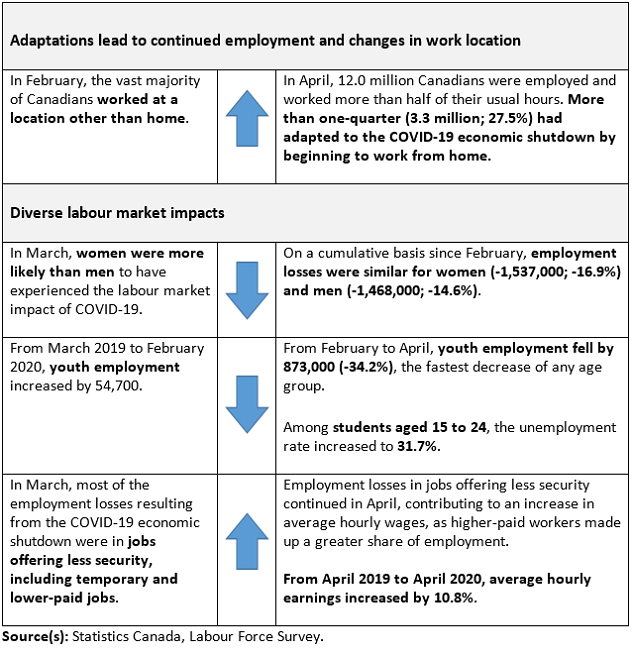Infographic 2
Highlights part 2

Infographic description
The title of the infographic is "Highlights part 2"
This is a text box that presents the highlights of the release.
Adaptations lead to continued employment and changes in work location
In February, the vast majority of Canadians worked at a location other than home. In April, 12.0 million Canadians were employed and worked more than half of their usual hours. More than one-quarter (3.3 million; 27.5%) had adapted to the COVID-19 economic shutdown by beginning to work from home.
Diverse labour market impacts
In March, women were more likely than men to have experienced the labour market impact of COVID-19. On a cumulative basis since February, employment losses were similar for women (-1,537,000; -16.9%) and men (-1,468,000; -14.6%).
From March 2019 to February 2020, youth employment increased by 54,700. From February to April, youth employment fell by 873,000 (-34.2%), the fastest decrease of any age group. Among students aged 15 to 24, the unemployment rate increased to 31.7%.
In March, most of the employment losses resulting from the COVID-19 economic shutdown were in jobs offering less security, including temporary and lower-paid jobs. Employment losses in jobs offering less security continued in April, contributing to an increase in average hourly wages, as higher-paid workers made up a greater share of employment. From April 2019 to April 2020, average hourly earnings increased by 10.8%.
Source(s): Statistics Canada, Labour Force Survey.
- Date modified: